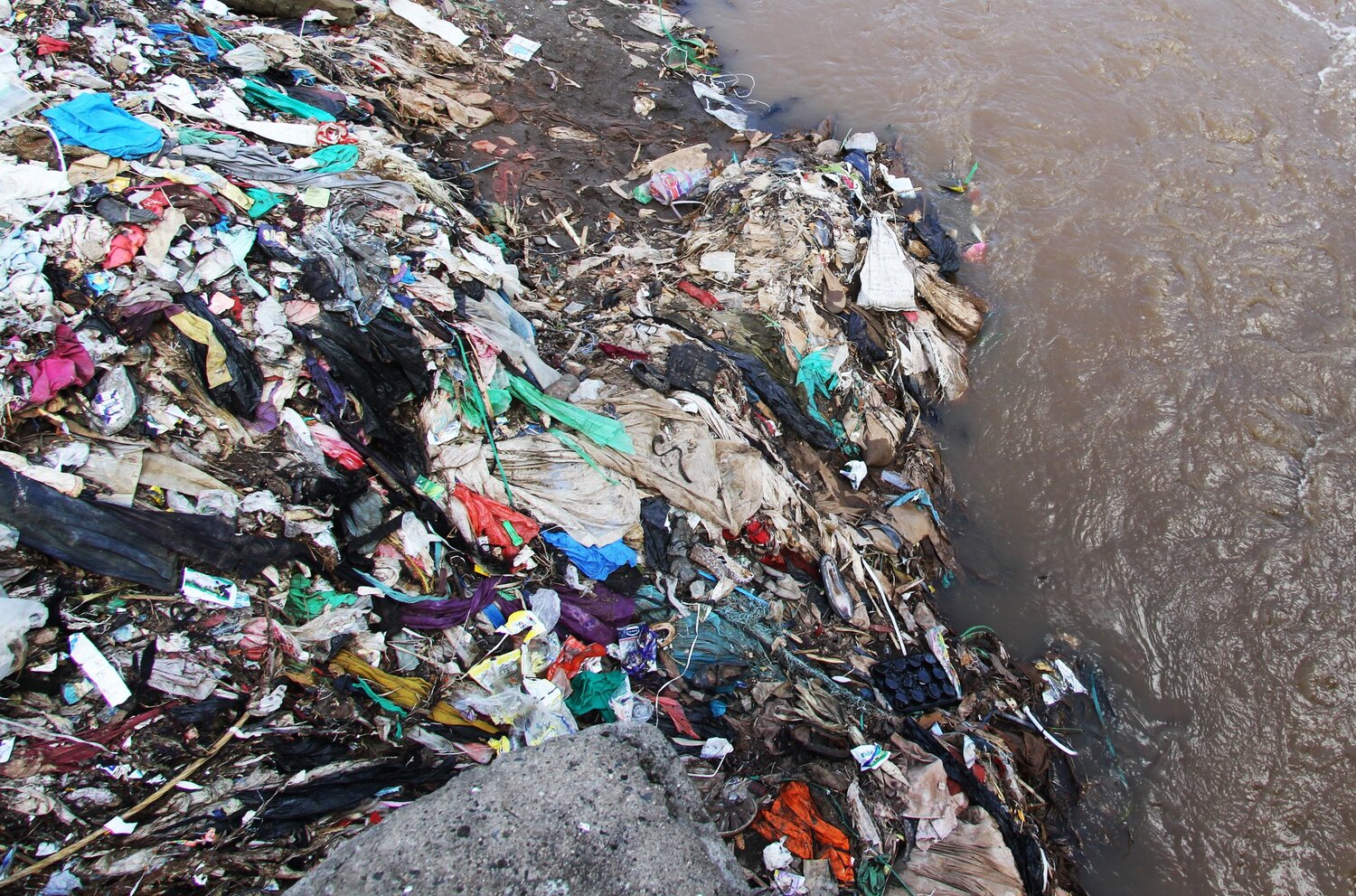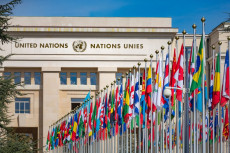- Fashion has not only exported its goods but also a somewhat enticing idea that the world needs more of what it makes.
- Rich countries need to sell both the idea of fashion and the material, cementing their position as a profitable industry.
- Africa is full of potential and there is money to be made after all. Its people consume Western media, and the portrayal of their wealthy, flashy and free lives brings the contrast to the forefront.
- Repeated exposure to the way of life of the rich white man alias colonization of the mind, is the first step to getting you flock the market, for the same items.
- Enter used clothes into the market; products of a system where rich nations saunter from the responsibility of cleaning their mess and instead creates an industry that takes care of their problem by taking it somewhere else.
- So, what can you do about it?
Fashion has become a dominant player in the clothing industry, the mover and shaker in an ever evolving domain.
It has loomed the promise of glitz and glamor, exporting not just its goods but a somewhat enticing idea that the world needs more of what it makes. Promising a constant stream of the trendy and the cheapest garments, consumers have become hooked to this system, unaware of the true cost of their infatuation and need to possess these fashion pieces.
Generally, the rich countries need to sell both the idea of fashion and the material, cementing their position as a profitable industry worth some $197 billion which is just 10% of the global fashion industry.
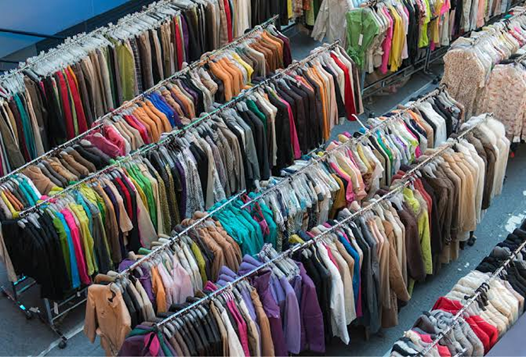
Read More
Africa is an untapped territory. It is full of impressionable young minds who would be willing to embrace a fashion-forward lifestyle. Wealthy nations have been keen to skip the sales pitch and straight-up export their clothing to these poor nations.
Africa is full of potential and there is money to be made after all. Its people consume Western media, and the portrayal of their wealthy, flashy and free lives brings the contrast to the forefront. Movies and music don’t merely serve the purpose to entertain but have rather subtle undertones.
Repeated exposure to the way of life of the rich white man with a closet stacked with high-end fibre clothing, perfect-fitting jeans, Lacoste and Gucci belts and the latest Vans sneakers subject the black man’s mind to want that for himself.
Colonization of the mind is the first step to getting you flock the market, for the same item.
Kenya is a great importer of used clothes items, informally known as mitumba. China, unsurprisingly, is the greatest global exporter of second-hand items, not just apparel. The largely unregulated informal sector and lax regulatory frameworks fuel Lucrative markets in Africa.
Two million individuals are employed in Kenya’s mitumba industry. Data from UNComtrade indicated a 500% increase in imports of fast fashion clothing between 2005 and 2021. The data source also revealed that over 900 million tonnes of used clothing was brought into Kenya in 2021. Kenya imported over 177,386 tonnes of the same in 2022.
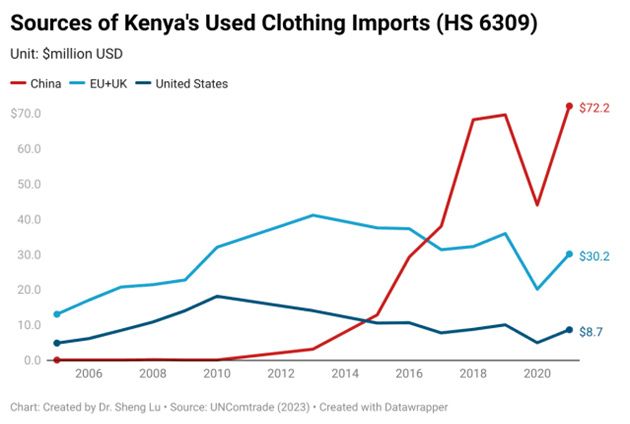
Some of the imported clothing is donated to charities through generous contributions by families in the countries of origin. Majority of them however are made from polyester plastic, a material cheap to obtain and mold into multiple forms. Scruffing and rummaging around your closet, you may recognize familiar brands that sell the claim of sustainability in fashion.
Procuring a bale of these goods is no mean feat. For one, it is a gamble. The buyer has no idea what they will get until the goods arrive at his store. One of the reasons most of the clothing ends up being wasted is because of the absence of any communication between the buyer and seller.
Over half of the imported second-hand clothing eventually appears to be torn, stained beyond repair, too big or too small, or simply unsellable, given its general condition. The gamble turns to a loss, as over 20% to 50% of the bale will never make it to sale.
The waste items either end up being carelessly discarded in street paths, rivers, drainage systems and whatever gets collected ends up in massive landfills.
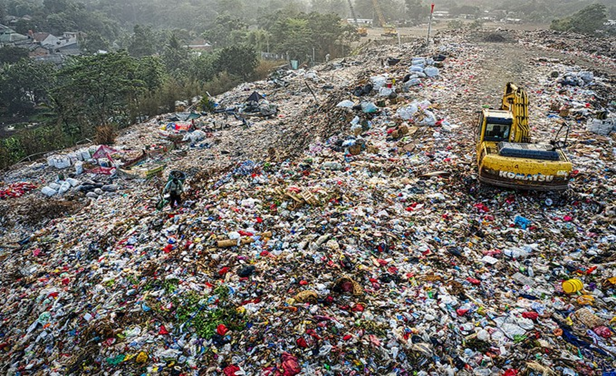
In Kenya, over 4,000 tonnes of garb ends up in these waste dumps. To get a broader perspective, 460 billion dollars worth of clothes are discarded yearly around the world.
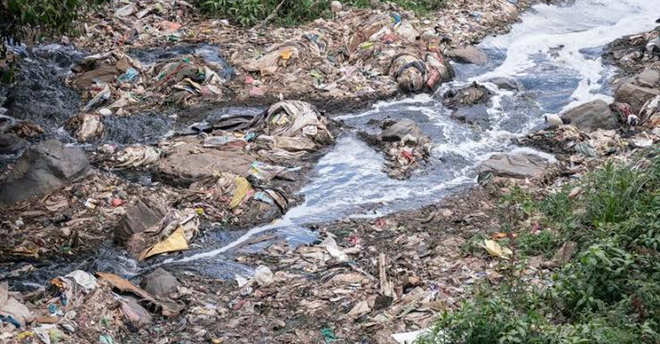
‘Let them deal with it!’
Making a purchase is not merely impulsive buying but a conscious intent. Whether based on the genuine need to overhaul your dressing style or to make a fashion statement, fashion conquers the mind.
The psychology of fashion transcends beauty and influences self-identity and expression. Getting that new ‘tee’ offers you a sense of confidence stepping into the office the coming morning and the need to feel at place in a world offering you a multitude of choices, and of course, the ever present fear of missing out (FOMO).
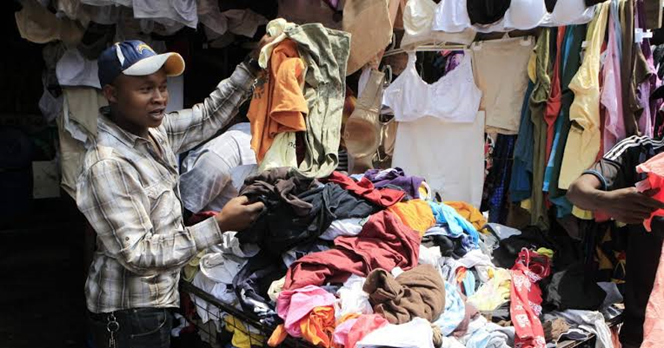

The Basel Convention of 1989 set out to restrict the movement of Hazardous waste and their disposals between nations, particularly to poorer countries. In 2019, the Basel Treaty was amended to include plastic waste in its scope. While data shows a menial decline in exports of waste clothes around the world in that same year, the graph soon reveals the growing demand for the industry in the subsequent years.
So, are you to blame?
Social media and highly persuasive advertisements by influencers and your favourite stars might get you drooling for the next thrift haul. Consider why you need it and how that impulse might generally turn out to be a poor choice. Consider restraining yourself from needing new outfits ever so often. Reduce your fashion footprint.
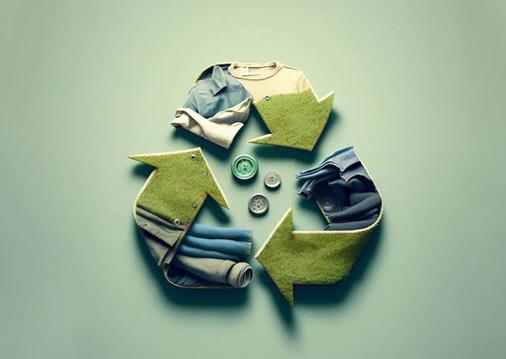
Swap clothes with friends. It's a trend taking shape in Kenyan suburbs. At absolutely no cost, parties get to choose decent get-ups, and the only transaction is exchanging phone numbers.
Educate yourself and advocate for eco-friendly designs. Arming yourself with this knowledge and still opting for plastic wear makes you complicit to the situation. Be the better man. Eco-wears not only lean into the trendy fashion sense, but they do so responsibly, tailoring to your fashion desires while remaining faithful to environmental conservation efforts as these materials last longer in your wardrobe and contribute less to the waste problem.
“The trade of used clothing from Europe is to a large and great extent, a trade in hidden waste. This is known as waste colonialism and it's supposed to be illegal…Why? Because the backbone of the fast fashion industry is plastic, and plastic clothing is essentially junk.” - Betterman Simidi Musasia, Founder and Patron of Clean Up Kenya.

